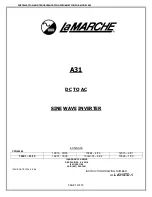
ADS5102/3 EVM Operational Procedure
1-3
Overview
1.4
ADS5102/3 EVM Operational Procedure
The ADS5102/3 EVM provides a flexible means of evaluating the ADS5102/3
in a number of modes of operation. A basic setup procedure that can be used
as a board confidence check is as follows:
1) Verify all jumper settings against the schematic jumper list in Table 1–1
and Table 1–2:
Table 1–1. Two Pin Jumper List
Jumper
Function
Installed
Removed
Default
W10
External REFT feed
External
Internal
Removed
W11
External REFB feed
External
Internal
Removed
R39
Positive analog input
Transformer coupled
No connection
Installed
R37
Negative analog input
Transformer coupled
No connection
Installed
R38
Positive analog input
Differential amplifier
No connection
Removed
R36
Negative analog input
Differential amplifier
No connection
Removed
R43, R44
Output clock option
ADC clock at output connector
Buff clock at output
connector
Removed
R42
Optional output clock
parallel termination
Provides pullup termination
No pullup termination
Removed
R14
Optional ADC clock
parallel termination
Provides pullup termination
No pullup termination
Removed
Table 1–2. Three Pin Jumper List
Jumper
Function
Location: Pins 1–2
Location: Pins 2–3
Default
W1
Band gap input voltage
(power down reference
mode)
REFT voltage to bandgap pin
1.25 V to bandgap pin
Removed
W3
Transformer and diff amp
common mode select
ADC output common mode
voltage
External common
mode voltage
1–2
W4
Power down select
Operate mode
Power down mode
1–2
W5
Output enable select
Data bus tristate
Data bus enable
2–3
W6
Reference select
External reference
Internal reference
2–3
2) Connect supplies to the EVM as follows:
J
1.8-V analog supply to J6 and return to J5
J
1.8-V digital supply to J9 and return to J10
J
3.3-V driver supply to J13 and return to J14
J
5-V analog supply to J7 and return to J8
J
–5-V analog supply to J11 and return to J8












































